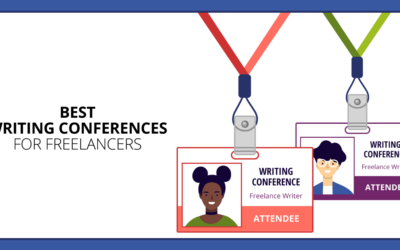
It happens to all freelance writers – we get used to it.
But what about being rejected by the same editor twice? Three times? Four?
How about eight times?
That’s how many times it took me to land one of my target magazines, a craft-brewing trade publication.
Rather than seeing this as a cause for embarrassment, this pitching experience is an example of how creativity and determination can end up landing you a feature article in a dream publication.
It also helped me discover how to write better pitches that get you more article writing jobs.
Here are six tips I learned along the way:
1. Research the publication first
This one I actually had down pat. I spent a couple hours scrolling through the last year’s worth of headlines from the craft beer publication’s back issues, to be sure I didn’t duplicate any pitches.
Research is crucial, so you don’t end up wasting your time pitching something they just published a few months ago.
2. Come up with a specific, unique angle…
While preparing for my initial pitch, I noticed news outlets had profiled a few hotels that carried craft beer, so I pitched a trend piece about craft beer in hotel bars.
The editor rejected the pitch for being over-covered in the past year. However, he said he would consider it if I could find a more unique angle.
3. …Or broaden an idea that’s too specific
With another pitch, I focused on a new craft beer technology coming out in a few months. The editor didn’t feel comfortable featuring the technology without knowing more about it.
Sometimes you need to broaden your topic, turning one or a few bits of news or products into a larger-scale feature.
4. Pitch the front of book first
After my first few feature rejections, I started looking for smaller pieces to pitch, such as a craft beer book review. This is the type of article that would run in the front of the magazine, also known as a front of book (FOB) article.
This can be an ideal way to break into a new publication with an editor who is not familiar with your writing.
5. Chalk it up to bad timing
You may have a great idea, but sometimes it’s so perfect that the publication is already working on it. One of my favorite article ideas – craft beer at Disney World – was heading to the presses as I typed.
There’s no way I could have known. It’s disappointing, but at least I knew I was on the right track.
6. Send great clips
Why did this editor give me so many chances? In my initial pitch, I provided some relevant beer industry clips. Besides showing promise with my initial (though rejected) ideas, the editor said he would try to get me in the magazine based on my clips.
The lesson? Share clips whenever possible, even if they’re not the same niche. It’s the polished writing that counts.
Success
Ninth time’s the charm! I finally landed a feature article with the national craft beer magazine’s website, at a flat rate of $350, comparable to many other print magazines I write for.
Thanks to our back-and-forth emails, the editor and I established a solid working relationship. He invited me to write more pitches, and hopes to meet when he travels to a beer event in my hometown.
Plus, knowing how hard I tried to land that feature made seeing my byline that much sweeter.
How do you get your pitches in shape? Tell us in the comments below.
Carolyn Heneghan is a New Orleans-based freelance writer who contributes to national and regional magazines and company blogs in food and drink, travel, technology, business, healthcare and education. Check out her website or follow her on Twitter.









